Andros
The endemic Bahama Oriole can only be found on Andros, making this stop on the Caribbean Birding Trail particularly important!
Andros is cloaked in pine forests in the north, and dry scrub and mangroves in the south. Although considered one island, Andros is in fact a series of islands. North and Central Andros are a single landmass, served by two airports, Fresh Creek and San Andros further north. Although fragmented by several saltwater creeks, there is a continuous main road, the Queen’s Highway, all the way up the east side, from Behring Point in the south to Morgan’s Bluff in the north.
The west side of the island is totally inaccessible. Refrain from venturing far off the main road. Old logging trails exist further inland but they are not maintained and you will get no help if you break down. You can easily visit all the settlements on the east, north and northwest side of this land mass. Owens Town, an abandoned logging settlement, is now totally overgrown and better avoided. Wherever you go on Andros, take food and water with you. Cell phone service is good along the main road. Try to pick up a map of the island at the airport or at the tourism office in Fresh Creek. There is a Bahamas National Trust office close to the ferry dock at the Lighthouse Yacht Club.
Central and North Andros
Check Fresh Creek and also Staniard Creek further north for Bahama Swallows. These birds are often seen on wires near the bridge at Fresh Creek. Look in the palms around Lighthouse Yacht Club and Marina for Bahama Orioles.
The best birding is north of Fresh Creek. There are few deviations to be made off the main road on Central and North Andros, but check out any tracks on both sides of the road for birds as you proceed northwards. Along the east shore are many good places for shorebirds at low tide.
From Fresh Creek going north:
Proceeding north to the crossroad to old Owens Town, the main road takes a right turn. Before continuing on the main road, drive straight onto a track ahead, then take the next track left to a little turning circle. There is a small area of coppice nearby where an indistinct trail has been made but is hard to follow, so just bird the area near your vehicle and avoid the poison wood. Exploring Owens Town is no longer advised. Return to the main road and continue north.
The north end of North Andros offers good birding, especially around Nicholls Town in the northeast. A trip to Red Bays on the northwest corner of the island is also worth a visit, where they make beautiful straw products and maintain a small sponging industry. All along the east, north and northwest coast is good birding at low tide. Check the tracks going off the paved roads into the pine forest for the Bahama Yellowthroat and winter warblers. Look for Bahama Swallows all along the road on power lines or flying overhead and you might find a nest in a pole or topless palm tree.
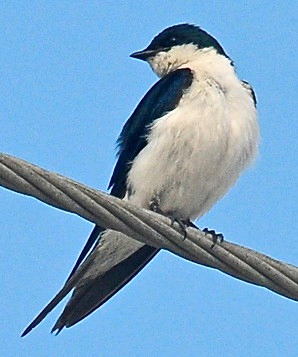
There are many blue holes, some 183m deep, where fresh, clear water sits in a discrete layer on top of salt water. Captain Bill’s Blue Hole, a few miles north of Fresh Creek, is accessible by unpaved track, about 4km from the main road but try this only in the dry season when you can see and avoid the potholes. The entrance to this route is north of Love Hill, turn west near a white house with statues of lions on the wall. On the way, look for a right turn and then a left turn, it should be obvious, with a turning and parking area when you get to the blue hole. Bird on the way and take your swimsuit to dive into the blue hole. Around the blue hole, vegetation has been clearly marked and there is good birding.
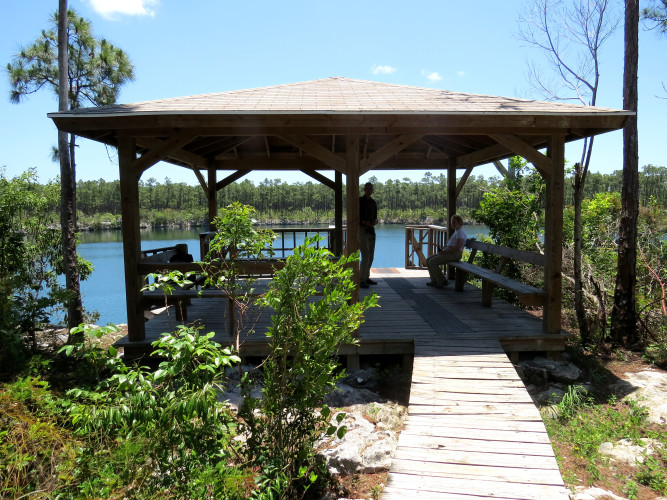
The Great Lizard-Cuckoo can be found throughout the pine forest but tends to prefer areas of mixed coppice for extra cover. Andros is one of the three islands where the Cuban Emerald can be found and is often seen in the pine forest. For the Bahama Swallow look around the various creeks and also along the road. The Bahama Yellowthroat, unlike its cousin the Common Yellowthroat, tends to prefer the dry pine forest to wetlands. A played-back voice recording is helpful for calling this bird in. For the Bahama Oriole, the very special bird of Andros found nowhere else in the world, look around all the settlements and particularly in palm trees. It is also seen on trees on the main road and also in the pine forest.
From Fresh Creek going south:
South of Andros Town and Fresh Creek, there is little opportunity for birding except for shorebirds, until reaching the south end at Cargill Creek and Behring Point. Try to be there at low tide.
Mangrove Cay
Mangrove Cay is an island lying to the south of Big Wood Cay, which lies south of Central Andros. It is not possible to reach Mangrove Cay from Central Andros except by boat. There are regular flights from Nassau to Mangrove Cay airport. This island supports a good sized mixed community of Bahamians and foreigners and Lisbon Creek at the south end offers a good harbour where the mail boat docks. There is a regular short ferry from Lisbon Creek to Driggs Hill on South Andros.
The mangroves running between the east shore and the road are excellent for all the shorebirds. The hinterland of this island is accessible so explore and see what you can find, especially the Bahama Oriole and Great Lizard-Cuckoo.
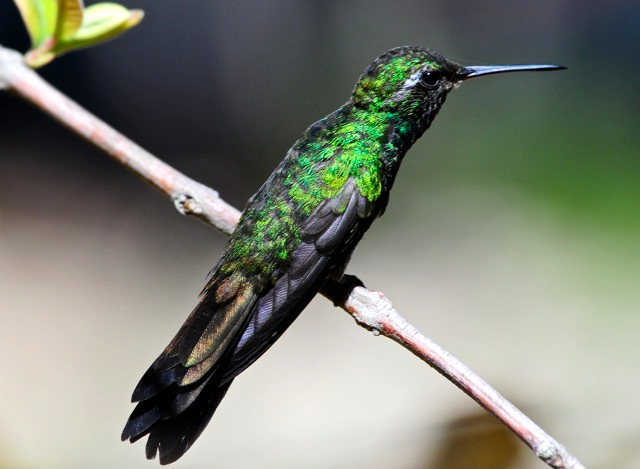
South Andros
South Andros can be reached by ferry from Mangrove Cay or to fly into Driggs Hill from Nassau. Again there is only one road running down the east side of the island. Explore as you go and there are usually good sightings of the Bahama Oriole.
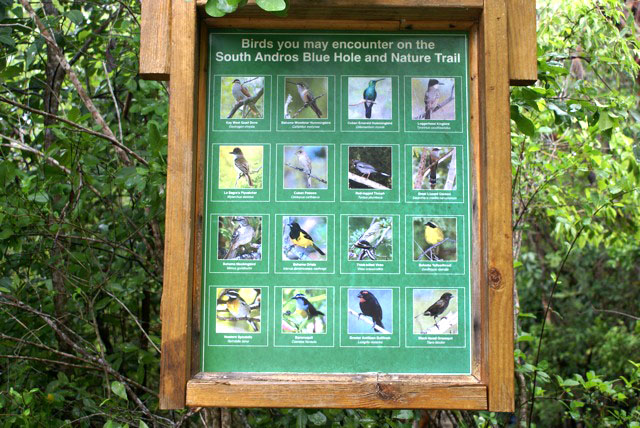
At the north end of South Andros are some amazing blue holes with a nature trail running through the area. This is very rough terrain and not easy to follow the trail so it’s recommended contacting Sharon Henfield at [email protected] to arrange a guide. Many local species can be found along this trail, including the Bahama Oriole and Great Lizard Cuckoo. This is a half day expedition, wear strong shoes and a hat and take water with you.
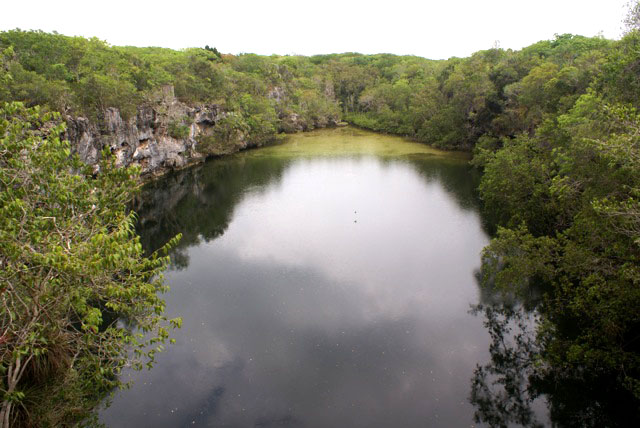
At the south end of South Andros the paved road runs out at Mars Bay but a track continues south, which is safe to follow. The vegetation in this area is essentially undisturbed so it offers good birding for the local species and winter migrants. Watch for poison wood and manchineel. If you cannot recognize these plants, avoid going into the undergrowth and do your birding from the open track. There are many small and large sink holes throughout Andros and the terrain can be very rough, so be careful when going off the trails.
Endemics: Bahama Oriole, Bahama Woodstar, Bahama Swallow, and Bahama Yellow-throat
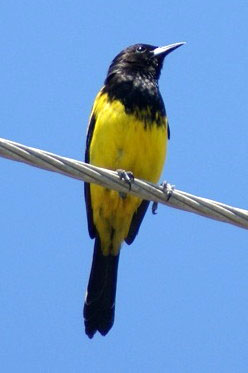
Bahamian Specialties: Great Lizard-Cuckoo, Mangrove Cuckoo, West Indian Whistling Duck, Zenaida Dove, Cuban Pewee, La Sagra’s Flycatcher, Loggerhead Kingbird, Cuban Emerald, Red-legged Thrush, Bahama Mockingbird, Thick-billed Vireo, Western Spindalis, Black-faced Grassquit, Key West Quail Dove, and Greater Antillean Bullfinch
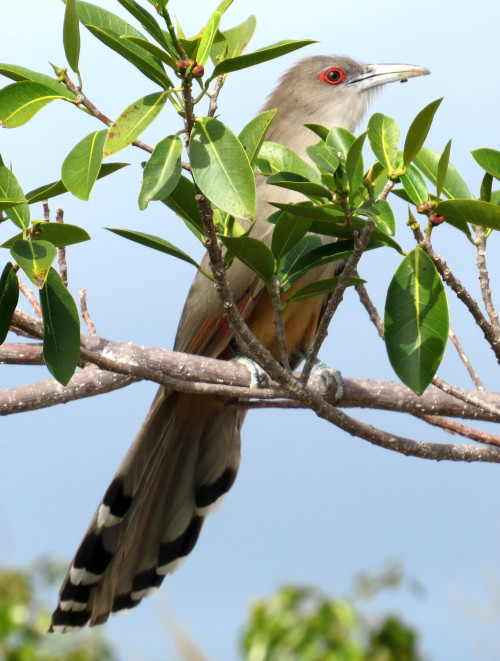
There are daily flights morning and afternoon from Nassau to San Andros (North Andros), Fresh Creek or Andros Town (Central Andros), Mangrove Cay (Mangrove Cay) and Congo Town (South Andros). It is possible to explore each section by taking the morning flight out from Nassau and the afternoon flight back. A rental car is essential in each location, usually available at the airports with prior arrangement. There are places to stay at each location for overnight visits.
